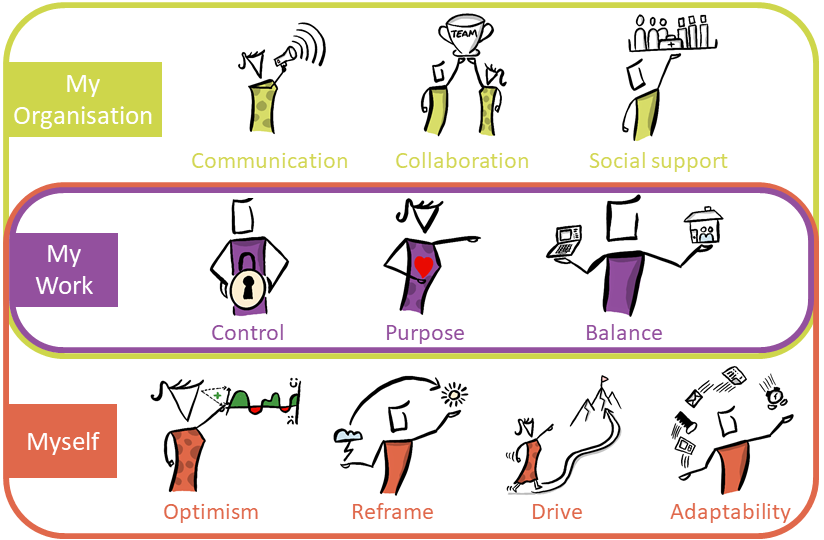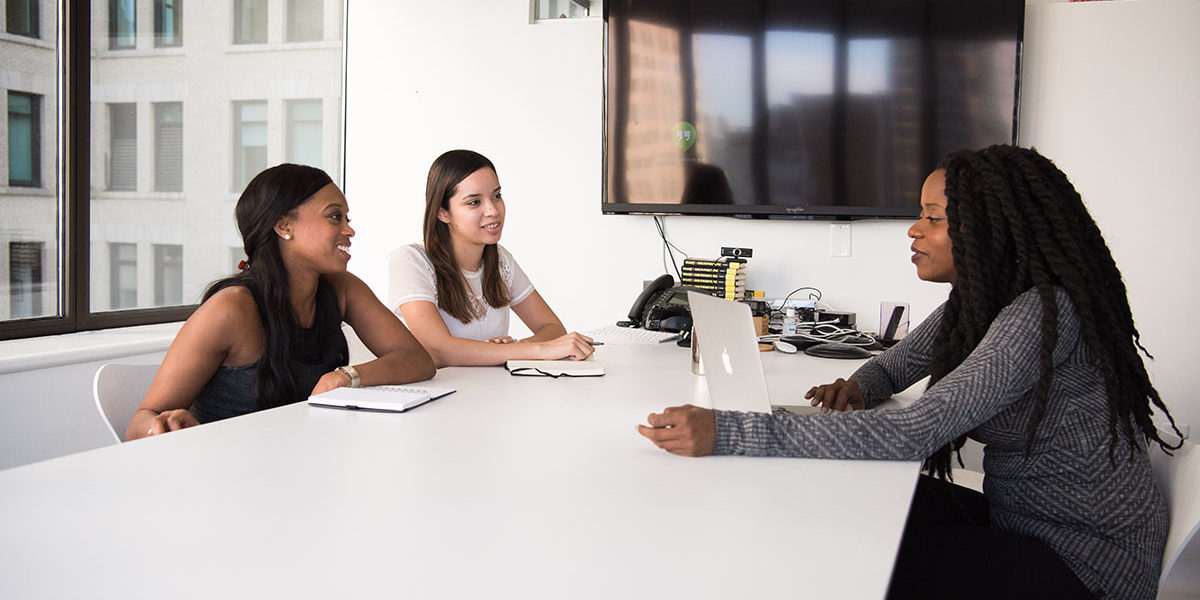Welcome to final part of my three-part blog on building resilience in organisations, teams and individuals. In the first blog I outlined a way to look at resilience to help understand it, as both a “capacity” and an “active process”. As a reminder, building resistance capacity is a preventative way to equip your organisation for coping positively against future stress and trauma. Whereas resilience is an active process using learned behaviours and ways of thinking to enable us to deal with psychological stress in a positive way when it is actually happening around us in the moment.
We then looked more closely at the role the organisation might have on building resilience through communication, collaboration and social support. Following this, last time in part two, we looked at the responsibility the individual worker has to build resilience. These intrapersonal characteristics of the individual are their level of optimism or realism towards occurring events, their adaptability towards stress, trauma and change, the ability to reframe their emotions when in the situation and their drive towards successful outcomes.
Finally, in this part, we will explore work itself and how building resilience is a shared responsibility between the worker and the organisation.
Building Resilience through your Work
Work is where a number of, at times, conflicting needs intersect and employees have to do a balancing act to ensure these are in the right equilibrium for them. Influences on this balance include the personal needs of the individual, the needs of the team and organisation and the needs of external social structures for the individual such as family, religion and social responsibilities for example.
In the case of building resilience this translates into the perception that the individual is in control of their working environment, knows the purpose of why they are there and what they are doing, and has generally succeeded in balancing all the needs outlined above. Let’s look at each in turn.
Workers who feel in control of their work have been shown to have a number of benefits from those who feel helpless in their jobs. This is shown through levels of happiness, quality of output of their job, motivation levels, mental wellbeing and resilience. It is these last areas of mental wellbeing and resilience that is important in building resilience. In the late 1970’s, Robert Karasek developed the Job Demands-Control-Support model and showed that the amount of strain (or demands) in a job can be mitigated by the decision latitude (or control) someone had in their role. In other words, the stress of the job can be lowered with the amount of control someone has over how they do their job. This is still a driver of modern “autonomous working teams” and a move away from command leadership.
Karesek’s work was built upon with Demerouti et al (2001) creating the Job Demands-Resources model, adding findings showing that a team or individual would deal with the stress of work demands even better if the right resources (both internal and external) were available to them to complete their job.
Therefore, if the organisation increases the amount of control and autonomy that teams and individuals have and provides the resources they need, then this will improve the mental health of these employees, even if they are in demanding job roles. Interestingly, it was also shown that if an employee perceives that they have control over their job role then this is enough to assist with lowering stress levels. It follows that if the employee can be supported by their line manager to feel in control then resilience to stress is increased. The major action here is for the organisation and the employee to work together on the “job crafting” of the role to ensure the level of autonomy and control can be maximised.
The second area of work that is important for building resilience is purpose. This is a combination of a number of characteristics including the ability to focus on a goal, the self-motivation to move in that direction and an understanding of why they do their job – and that their job is meaningful.
The organisation’s role here is to generate effective communication about the mission of the organisation and how the employees fit into it, how the performance of the organisation towards fulfilling its strategic goals is cascaded down to a granular level and ensuring this is interpreted correctly by each employee. Line managers have a substantive role here to ensure this volume of communication around purpose lands correctly with each individual. Understanding what motivates each individual in the team is key to how to communicate this message uniquely to each person.
The individual role is to seek to understand how they fit into the organisation, why this is important and the understanding why the “struggle” for achievement is important. There is a fair amount of development needed for both line manager and individual to achieve this sense of purpose. The rewards for the organisation are a collective of workers who can see why they sometimes need to battle through adversity and be resilient to potentially organisation-damaging events. A sense of purpose therefore is a characteristic of resilience with ownership on the organisation to provide the “story” and the line managers and employees to buy into it and embrace it.
The third and final area for building resilience in the work environment is around balance. This was outlined above as being the individual’s sense of achieving the right equilibrium between the needs of the organisation and pressures or desires outside of work. This is not a blog on work-family balance and there are terabytes of information about work-life balance on the internet.
However, from the specific view of building resilience, this could be summarised into having a sense of “coping” with the fluctuating pressures around modern life, combined with the positive psychology characteristic that they see competing pressures on them as a challenge rather than a cause of stress. The achievement of the right level of balance from all the needs around you gives a positive sense of satisfaction to those with higher levels of resilience.
The role of the organisation here is to seek to understand the often-conflicting needs of outside life with work and to offer the flexibility they can to allow the individual to work on their personal balance. The role of the individual is to reflect on what balance they need, to use the resources they have to try and achieve this balance, and to embrace the changing world and accept that balance in your life needs to be constantly renegotiated and adjusted.
So, to summarise, to build resilience in the work itself, the organisation and the individual need to accommodate each other and share the responsibility around the level of perceived control in the job role, clarifying the purpose of the job and ensuring a healthy level of balance between competing needs in and outside of work.
This ends my mini-series of blogs around the concept of “building resilience”. Hopefully this will help you break down the hot topic of resilience into manageable chunks for your own organisation. We have summarised our thinking into the following Tap’d Resilience Model.

If you would like any more information please do get in contact and we can talk through the practical steps you can take with your organisation to help you prepare for and get through the next year or two of turbulence.

